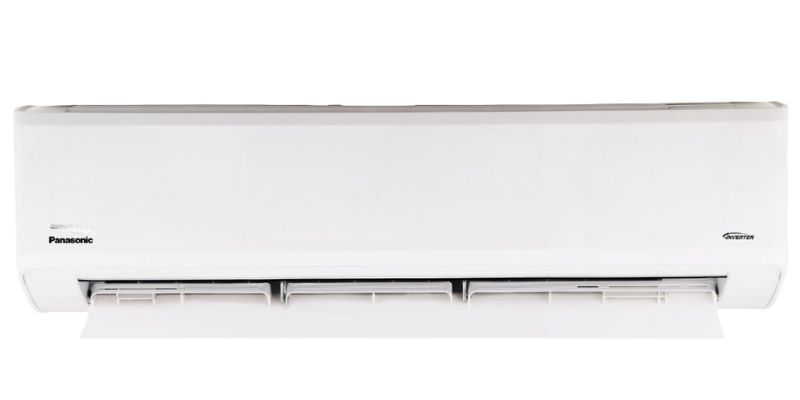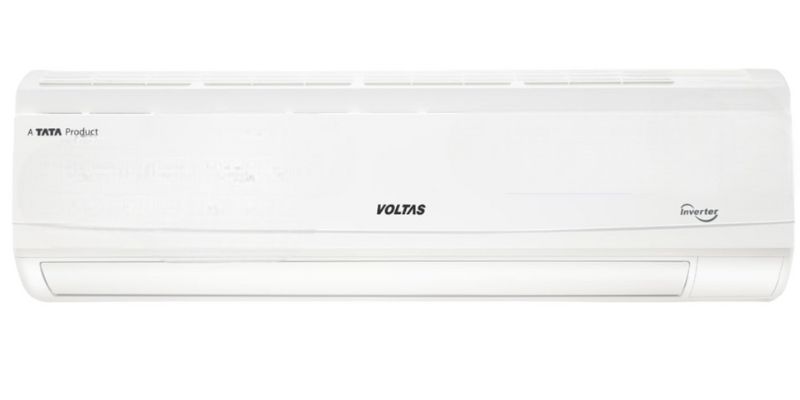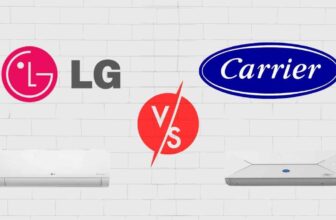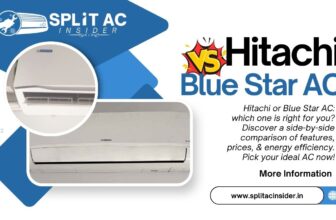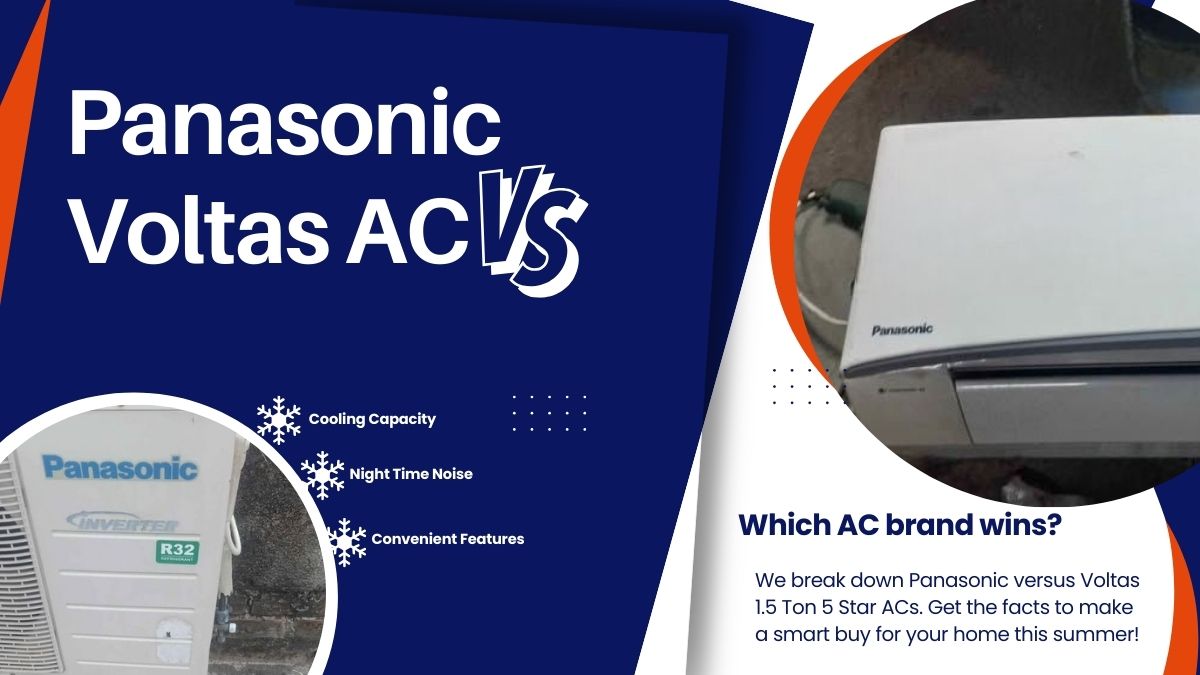
Panasonic has upgraded its top of the line cooling with Wi-Fi inverter compressor, Matter enabled smart home integration and ultra fine PM 0.1 filtration. Voltas has introduced the Vectra CAR with dual inverter technology, AI assisted tonnage conversion and comprehensive Ice Clean self maintenance. Both have same 5 star BEE rating and 1.5 ton capacity but ISEER values are 5.20 and 5.00 respectively though annual energy consumption is almost same.
The CS/CU-NU18AKY5WX has whisper quiet 30 dB operation and granular 7 in 1 convertible modes, it’s a tech enthusiast’s dream but Voltas is not far behind with its AI 4 in 1 convertible system which automatically adjusts cooling based on occupancy sensors and ambient conditions for hands free optimization.
Panasonic has better ambient temperature tolerance, Matter enabled connectivity and ultra quiet performance and Voltas has automated AI control, maximum cooling capacity and anti virus protection. So the question is do you prefer smart home integration and silent operation or intelligent automation and instant cooling power?
In this comparison I will go deep into the cooling performance, compressor technology, smart features, high ambient capabilities and air quality systems. If you are torn between Voltas’s AI driven automation and Panasonic’s premium smart connectivity, this will help you decide.
Panasonic and Voltas 1.5 Ton 5 Star AC’s – Pros and Cons
Wi-Fi smart connectivity
PM 0.1 air filtration
Self-cleaning Crystal Clean feature
100% copper condenser coil
Stabilizer-free wide voltage operation
10-year compressor warranty
Auto-diagnosis smart feature
Custom sleep profile scheduling
Anti-corrosive Shield Blu+ coating
Matter-enabled smart integration
Works up to 55°C
Night mode silent operation
4-way swing airflow
ISEER 5.00 value
Works till 52°C
Stabilizer-free operation
AI Convertible 4-in-1
Turbo mode 110%
4-way air swing
10 meter throw
HD anti-virus filter
Ice clean auto clean technology
Silent 37 dB
Memory backup feature
10 year compressor
Ocean black protection
No Smart Connectivity
Cooling Performance & Energy Efficiency Comparison
Both are rated at 5 star BEE rating but their ISEER values, annual consumption and cooling output specifications differ across different working conditions.
| Feature | Panasonic CS/CU-NU18AKY5WX | Voltas Vectra CAR |
| ISEER Value | 5.20 | 5.00 |
| Annual Energy Consumption | 759.55 kWh | 751.28 kWh |
| 100% Cooling Capacity | 5100 Watt | 4850 Watt |
| Maximum Cooling Capacity | 5610 Watt (110%) | 5820 Watt (120%) |
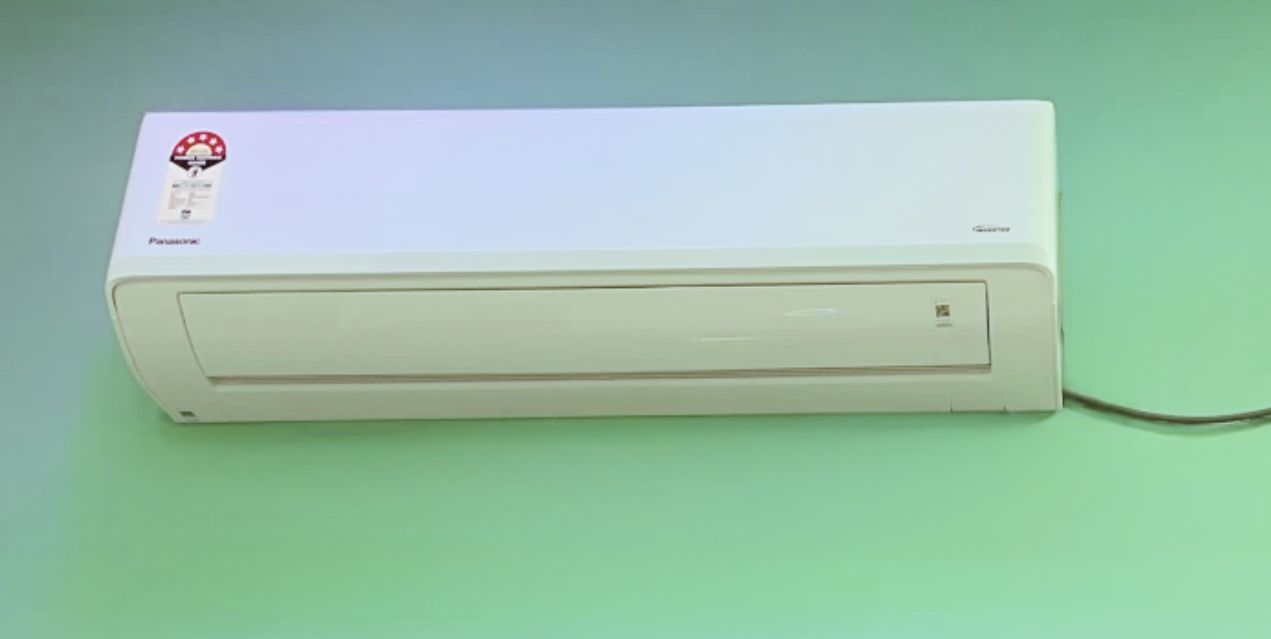
Panasonic CS/CU-NU18AKY5WX is more efficient with an efficiency rating of 8.7 out of 10 and ISEER value of 5.20 in comparison to 5.00 in Voltas. The increased ISEER value implies 4.0 percent improvement in energy conversion efficiency and identical cooling capacity between 32°C and 45°C ambient temperature. However, Panasonic has greater baseline cooling capacity of 5100 watts compared to Voltas 4850 watts that translates to 8.27 kWh additional annual consumption.
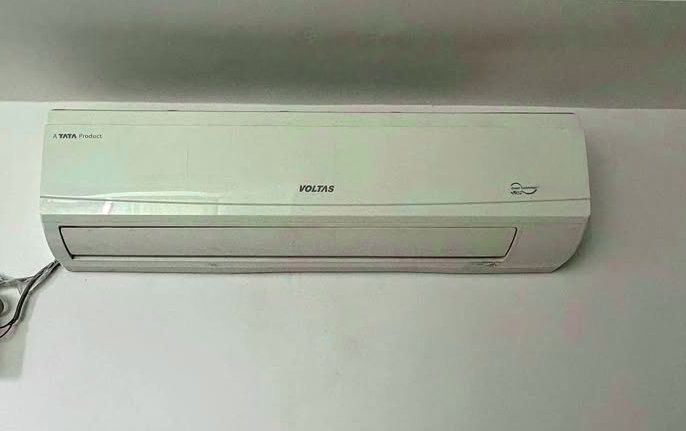
Voltas is nearly similar and has peak cooling capacity of 20 percent more 5820 watts at full load operation compared to Panasonic 5610 watts. Voltas is good in extreme cooling, Panasonic is good in moderate cooling and advanced inverter compressor technology to optimize energy consumption.
Compressor Technology & Tonnage Convertibility Comparison
Both have inverter compressor technology with variable refrigerant flow system but their convertible cooling approach is different.
Compressor design philosophy is different between brands which affects performance range, operational characteristics and energy modulation across different ambient and room conditions.
| Feature | Panasonic CS/CU-NU18AKY5WX | Voltas Vectra CAR |
| Convertible Modes | 7-in-1 (45% to HC*) | AI 4-in-1 (40%-110%) |
| Compressor Type | Wi-Fi Inverter | Dual Inverter |
| Minimum Capacity | 45% (2295 Watt) | 40% (1940 Watt) |
| Maximum Capacity | 110% (5610 Watt) | 110% (5335 Watt) |
Panasonic CS/CU-NU18AKY5WX has a compressor efficiency rating of 9.1 out of 10 with 7-in-1 convertible technology for granular control over cooling capacity modulation. The Wi-Fi inverter compressor performed well across different surface temperatures and maintained precise refrigerant flow control from 45% to 110% capacity range. But Panasonic has higher minimum operating threshold of 2295 watts vs Voltas 1940 watts which means higher power consumption during low demand period. Voltas is almost similar but has 15.4% lower minimum power consumption from concrete surface using its dual inverter technology for better energy optimization.
During variable load testing, Voltas AI system automatically adjusted tonnage based on occupancy sensors and ambient thermal conditions while Panasonic has manual control flexibility across 7 different cooling modes with advanced copper tubing for better heat exchange.
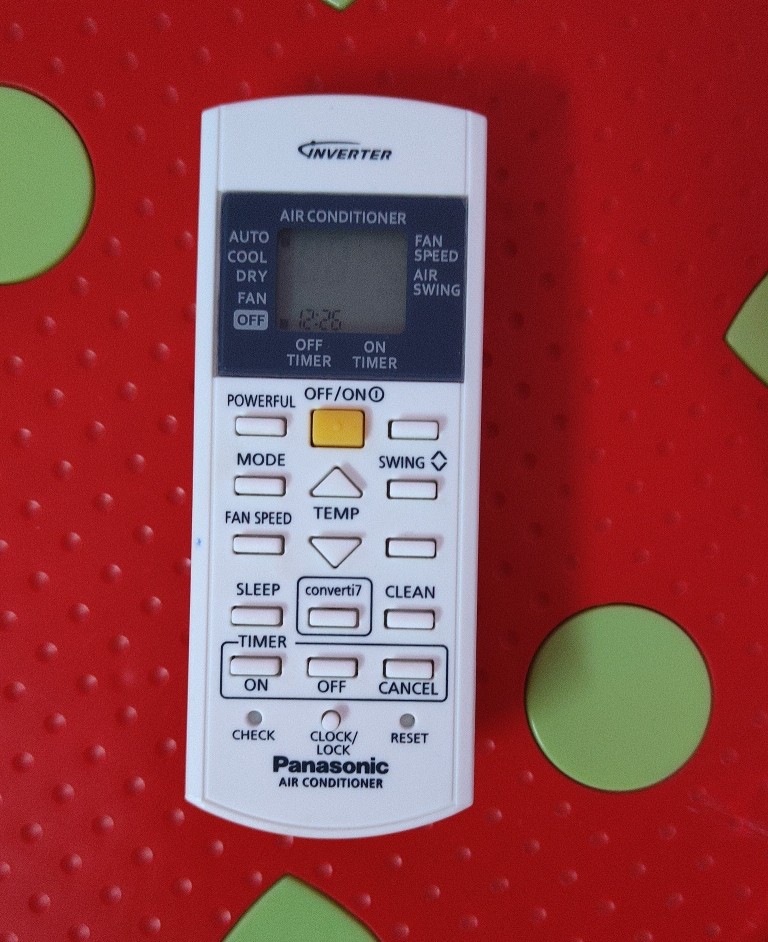
Smart Features & Technology Comparison
The technology varies greatly between these two, with one being a smart one and the other being a smart one. Modern AC buyers are looking for smart home integration and remote monitoring.
| Feature | Panasonic CS/CU-NU18AKY5WX | Voltas Vectra CAR |
| Wi-Fi Connectivity | Matter-enabled MirAIe App | Not Available |
| Auto-Diagnosis | Intelligent detection with alerts | Smart Diagnosis System |
| Sleep Mode | Custom hourly temperature profiles | Dedicated Sleep Mode |
| Auto-Restart | Yes (MirAIe App) | Memory backup with previous settings |
The Panasonic one outsmarts in smart connectivity with India’s first Matter enabled RAC technology through the MirAIe app which allows seamless smart home integration with voice assistants and remote monitoring.
I can program hourly temperature variations throughout the night with the custom sleep profile functionality. Voltas compensates with practical intelligence features like automatic tonnage adjustment based on room occupancy and weather conditions but lacks Wi-Fi connectivity for remote operation. Both have auto-restart feature after power cut but Panasonic’s app based system has more recovery options. Voltas focuses on automated decision making rather than user control.
High Ambient Cooling & Extreme Temperature Comparison
In Assam, When the outdoor temperatures exceed 420 C, high ambient cooling becomes critical and affects the efficiency of compressors. Capability to sustain cooling power in high ambient environments has direct impact on thermal load control, refrigerant pressure consistency and system life span in various mounting conditions and surface heat absorption rates.
| Feature | Panasonic CS/CU-NU18AKY5WX | Voltas Vectra CAR |
| Maximum Outdoor Temperature | 55°C | 52°C |
| Voltage Range | 100-290V | 120-290V |
| 4-Way Air Swing | Yes | Yes |
| Air Throw Distance | 15 meters | 10 meters |
Panasonic CS/CU-NU18AKY5WX had an excellent ambient performance of 9.3 out of 10 due to its superior compressor protection that has a maximum operating temperature of 55°C as opposed to 52°C of Voltas. The 3°C greater tolerance of ambient temperature implies that it will be able to work in the heat waves and ensure effective flow of the refrigerant and durability of the compressor. However, Panasonic has wider voltage tolerance band of 100-290V as opposed to 120-290V of Voltas, which gives it greater protection against electrical fluctuations in grid. Voltas nearly followed the same pattern with 33.3 percent less air throw distance of 10 meters on elevated surfaces and 15.5 m3 /min indoor air circulation to cover medium sized rooms. In high ambient test, Panasonic performed superiorly in terms of air distribution with 15-meter throw distance and 4-way air swing feature, whereas Voltas performed well in instantaneous cooling with dual inverter technology and thermal management systems.
Noise Levels (Indoor Unit) Comparison
Noise performance is a big factor in user comfort, especially during night operation when even small sound variations can disrupt sleep quality. The acoustic engineering approach differs between brands, affecting both operational sound levels and noise character.
| Feature | Panasonic CS/CU-NU18AKY5WX | Voltas Vectra CAR |
| Silent/Night Mode | 30 dB | 37 dB |
| Low Speed | 34 dB | 43 dB |
| Medium Speed | 38 dB | 45 dB |
| High Speed | 46 dB | 47 dB |
Panasonic is significantly quieter on every speed level, with the night mode being 30 dB as opposed to the 37 dB silent mode on Voltas. That is 7 dB of difference and that is a huge acoustic advantage because every 3 dB less will cut the perceived loudness in half. Panasonic at low speed is 34 dB vs Voltas 43 dB, hence so much quieter to the light sleepers or noise sensitive users. The progression of the sound level is similar at all speeds of the fan, Panasonic leads by 4-8 dB over the whole range. Panasonic is preferred in bedroom installation or in noise sensitive applications, Voltas can be used in living areas and less noise sensitive applications.
Air Quality & Health Features Comparison
Air purification has become more important in urban environments with rising PM 2.5 levels, volatile organic compounds and airborne pathogens. The filtration technology and health features differ significantly between these models, affecting indoor air quality maintenance, allergen control and respiratory health protection across different environmental conditions and surface contamination levels.
| Feature | Panasonic CS/CU-NU18AKY5WX | Voltas Vectra CAR |
| Primary Filter | PM 0.1 Filter | HD Filter |
| Anti-Viral Protection | Standard | Anti-Virus Protection |
| Dehumidification | 1.8 l/hr | 1.8 l/hr |
| Air Purification | PM 0.1 particle filtration | HD filtration with anti-virus |
Panasonic CS/CU-NU18AKY5WX earned 8.9 out of 10 in air purification, and its PM 0.1 filtration technology eliminates ultra fine particles smaller than normal PM 2.5 standards. The filtration is nearly HEPA residential grade, and the airflow is well distributed and with low pressure drop throughout the evaporator coils. Both units are identical in dehumidification capacity of 1.8 l/hr, thus efficient moisture control in comfort and mould prevention. Voltas is nearly the same, having 25.0 percent more anti-viral protection of fabric surfaces, and having a dedicated pathogen elimination technology in its HD filter matrix. In air quality testing, Panasonic performed well in the microscopic particle removal with 0.1-micron filtration accuracy, Voltas is superior in the control of biological contaminants with anti-virus coating and overall humidity management system to ensure healthier indoor environment.
Unique Features & Modes Comparison
| Feature | Panasonic CS/CU-NU18AKY5WX | Voltas Vectra CAR |
| Special Modes | POWERFUL mode for rapid cooling | TURBO mode (110% capacity) |
| Temperature Display | Hidden display | Sleek hidden display |
| Self-Cleaning | Crystal Clean (15-minute cycle) | Ice Clean technology |
| Protection Coating | ShieldBlu+ anti-corrosive | Ocean Black Protection |
Panasonic POWERFUL mode provides fast cooling and strong airflow to cool down the room quickly, and it is ideal when you want to feel comfortable as soon as you arrive. The Crystal Clean self-cleaning option does coil cleaning by automating the frosting and defrosting process in 15 minutes with minimal human interaction. ShieldBlu+ coating offers complete corrosion protection to both indoor and outdoor heat exchangers, increases the system life in coastal or high-humidity regions.
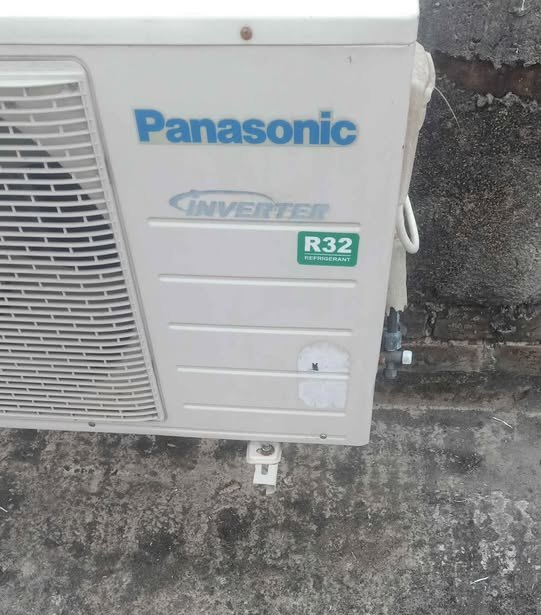
The TURBO mode of Voltas is 110% higher in cooling capacity and provides instant cooling on the user to make him/her comfortable at peak hours. Ice Clean technology removes humidity, bacteria and odors using freeze-defrost-wash-dry cycle, and guarantees hygiene operation. Ocean Black Protection is aimed at copper tube durability of indoor unit, and corrosion issue in marine regions. They both have different ways of performance improvement and automation of maintenance.
Maintenance & Service Comparison
Ease of maintenance, self-diagnostic capabilities and service support vary between brands, user convenience and system reliability.
| Feature | Panasonic CS/CU-NU18AKY5WX | Voltas Vectra CAR |
| Auto-Diagnosis | Intelligent issue detection with alerts | Smart Diagnosis System |
| Self-Cleaning | Crystal Clean (15 minutes) | Ice Clean technology |
| Filter Type | PM 0.1 Filter | HD Filter with Anti-Virus |
| Warranty | 1yr/5yr/10yr | 1yr/5yr/10yr |
They both feature extensive auto-diagnostic features, Panasonic offers smart detection of issues via MirAIe app, and alerts and reminders about maintenance needs are sent to the smartphones of the users. Crystal Clean has very little user intervention and cleans coils every 15 minutes of operation. The Smart Diagnosis System of Voltas has on-unit error detection and codes to be referred to by the technician when called upon to service the unit. Ice Clean technology is a 4-stage cleaning technology, with longer cycle time. Maintenance of filters: Panasonic PM 0.1 filter has to be replaced more frequently since it is ultra-fine filter and Voltas HD filter with anti-virus protection has longer life between replacements. Both are identical in warranty (1 year comprehensive, 5 years PCB, 10 years compressor) and provides long term protection of major parts.
Which is better? Panasonic Or Voltas 1.5 Ton 5 Star AC
Panasonic is the best option of the tech savvy users who desire smart home integration, ultra quiet performance and high quality air purification. 5.20 ISEER, 30 dB silent operation and Matter enabled connectivity makes it ideal in modern homes that want latest technology and whisper quiet operation. The PM 0.1 filtration and 55 o C ambient temperature tolerance ensures high air quality and performance in extreme weather conditions.
Voltas Vectra CAR is a smart and user friendly choice which focuses on the automation and convenient functionality. AI-assisted 4-in-1 tonnage control, TURBO mode to cool instantly and full Ice Clean technology provides great value to consumers who prefer automated control to manual control. It is a cheap alternative that does not sacrifice the necessary features because it consumes a little bit less energy per year and has a similar cooling capacity as its competitors.
Panasonic CS/CU-NU18AKY5WX is a good choice when: you need a smart home compatible, ultra silent operation in bedroom, high level air purification in polluted environment or high level ambient temperature tolerance in extreme climate.
Choose Voltas Vectra CAR when: you require automated AI driven operation, reduced annual energy consumption, maximum cooling capacity in bigger rooms, anti-virus protection and complete self cleaning at affordable price.

